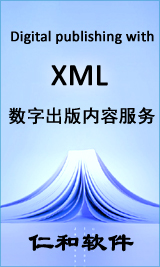Heming CHENG
,
Tianchun HE
,
Jianbin XIE
材料科学技术(英文)
In order to simulate thermal strains, thermal stresses, residual stresses and microstructure of the steel during gas quenching by means of the numerical method, it is necessary to obtain an accurate boundary condition of temperature field. The surface heat transfer coefficient is a key parameter. The explicit finite difference method, nonlinear estimation method and the experimental relation between temperature and time during gas quenching have been used to solve the inverse problem of heat conduction. The relationship between surface temperature and surface heat transfer coefficient of a cylinder has been given. The nonlinear surface heat transfer coefficients include the coupled effects between martensitic phase transformation and temperature.
关键词:
45 steel
,
null
,
null
ZHANG Lei WANG Peixuan TAO Rong MA Ruzhang ZHANG Guoguang University of Science and Technology Beijing
,
Beijing
,
China professor
,
Department of Materials Physics.University of Science and Technology Beijing.Beijing 100083
,
China
金属学报(英文版)
Nucleation and growth of He bubbles at different annealing temperatures T≤1023 K in stain- less steels HR-2 and SS321,implanted with He~+(40-70 keV.1×10~(16)-6× 10~(17) He~+/cm~2),were ohserved under TEM.T=0.45T_m seems to be a transition temperature.The He bubbles continue mainly their nucleation at 0.3T_m< T<0.45T_m,and grow predominantly at T≥0.45T_m,due probably to migration and coalescence by surface diffusion of metal atoms around the bubbles.The apparent activation energies for the growth are found to he 0.41 and 0.31 eV for HR-2 and SS321 respectively.The bubble density in HR-2 is greater than that in SS321 within whole measuring temperature range,and the onset temperature of rapid swelling is also higher.It is believed that the resistance of HR-2 to He is superior to that fo SS321.
关键词:
stainless steel
,
null
,
null
,
null
,
null
李悦
,
邓爱红
,
刘莉
,
王康
,
谢莎
材料研究学报
利用x射线衍射(xRD)和慢正电子束分析(SPBA)技术研究高温退火后含He钛膜的微观结构和钛膜内He相关缺陷的演化.XRD分析表明,高温退火后Ti和Si在高温下发生反应形成稳定的多晶TiSi2化合物,He原子的掺入会影响TiSi2晶体的择优取向,而对TiSi2晶粒尺寸的影响较小.SPBA结果表明,室温下,钛膜内的缺陷浓度或尺寸会随着掺He浓度的增加而增大;高温退火后,当He浓度小于5%(原子分数,下同)时(除2%外),钛膜内的He相关缺陷浓度随着He浓度增加相应地增加.当He浓度增加到14%时,高温会使较高浓度的He原子、He-空位复合体以及小He泡迁移聚集形成一些尺寸较大He泡,而较大He泡周围与He相关的小尺寸缺陷的浓度则会发生相应地减少.
关键词:
金属材料
,
含He钛膜
,
直流磁控溅射
,
He相关缺陷
,
XRD
,
SPBA
施立群
,
金钦华
,
刘超卓
,
徐世林
,
周筑颖
原子核物理评论
doi:10.3969/j.issn.1007-4627.2005.01.045
研究了用He/Ar混合溅射气体的直流磁控溅射制备钛膜中He的掺入现象.分析结果表明,大量的He原子(He/Ti原子比高达56%) 被均匀地引入到Ti膜中,He含量可由混合溅射气体的He分量精确控制.通过调节溅射参数,可实现样品中He的低损伤引入.研究还发现,溅射沉积的含氦Ti膜具有较高的He成泡剂量和高的固He能力,这可能是溅射沉积形成了纳米晶Ti膜所致.纳米晶Ti膜较粗晶材料具有很高浓度的He捕陷中心,使He泡密度增大而泡尺寸减小.随He引入量的增加,Ti膜的晶粒尺寸减小,He引起的晶体点阵参数和X射线衍射峰宽度增大,晶体的无序程度增加.
关键词:
氦
,
损伤
,
泡
,
钛膜
,
溅射沉积
冯文天
,
马新文
,
朱小龙
,
张少峰
,
刘惠萍
,
李斌
,
闫顺成
原子核物理评论
利用反应显微成像谱仪对70和100 keV He2+与He原子碰撞转移电离(TI)过程中不同出射角度的电子能谱进行了测量,观测到出射电子能谱具有如下分布特征:出射电子速度分布介于0和入射离子速度νp之间;在不同出射角度电子能谱分布均有一极大值存在,随着出射角度的增大,能谱分布极大值逐渐减小; 当电子出射角度等于45°时,多数电子集中在0 eV附近.上述特征可由低能离子-原子碰撞"准分子"模型进行定性解释.在100 keV He2+-He转移电离出射电子能谱中有靶电子被俘获至散射离子连续态(electron capture to continuum,简称ECC)电子的贡献,这可看做是动力学两步过程的作用.
关键词:
反应显微谱仪
,
转移电离
,
ECC电子
,
"准分子"模型
李炳生
,
张崇宏
,
杨义涛
,
周丽宏
原子核物理评论
沿Si的(100)面注入He离子, 能量为30 keV、剂量为5×1016 ions/cm2. 注入后样品切成几块, 在真空炉中分别做退火处理, 退火温度从600 ℃到1 000 ℃, 退火时间均为30 min. 利用原子力显微镜研究了各个样品表面形貌的演化. 发现样品表面形貌与退火温度相关联. 假设在气泡中He原子与空位的比值很高, 导致样品内部存在高压的He泡, 从而使样品表面形貌发生变化. 探讨了在Si中He泡随退火温度的演化和He原子在材料中的释放机制及其对表面的影响.
关键词:
单晶Si
,
离子注入
,
He泡
,
原子力显微镜
,
表面形貌
陈煜
,
林文胜
,
鲁雪生
,
顾安忠
工程热物理学报
系统输送压力对于He Ⅱ强制流动输送系统而言至关重要,因此在系统运行之前,实现对其数值的有效预测是一项十分必要而有意义的工作.根据特定管路结构所能允许的均匀极限漏热量,借助于具有一定实验基础的经典流体紊流流动关系式,可以预测能够成功实现He Ⅱ传输的系统压力差.
关键词:
He Ⅱ
,
强制流动
,
漏热量
,
输送压差






